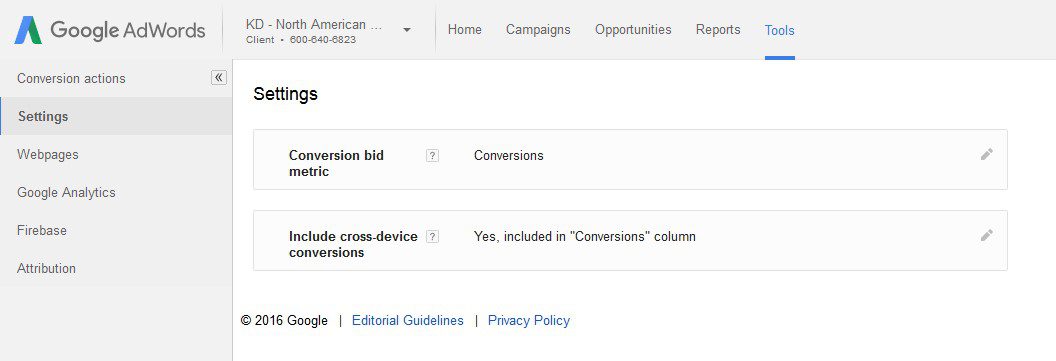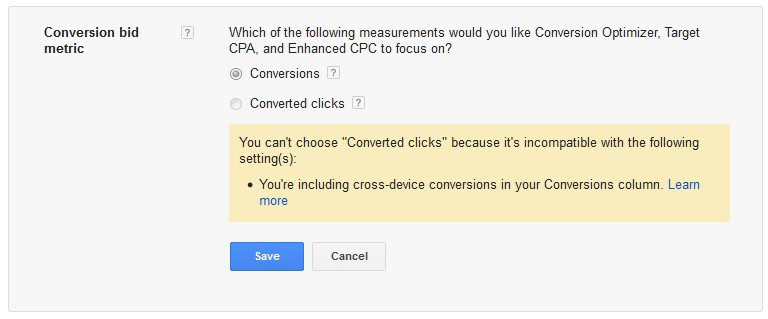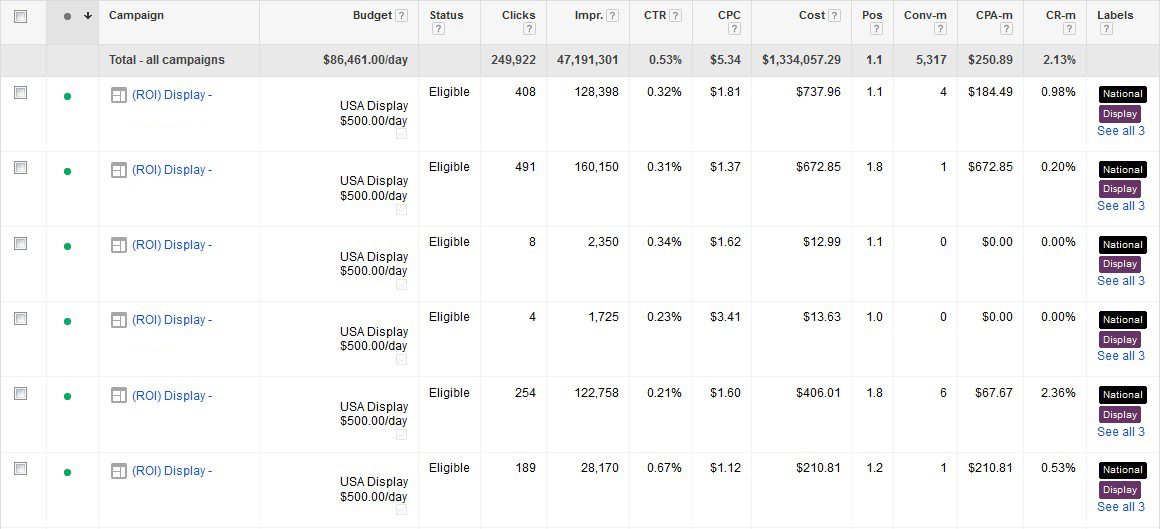Since 2001, Google AdWords has offered conversion tracking to help retailers track important actions that occur after their ad is clicked. Today, the metric Converted clicks measures conversions the same way that they were back when the feature was created. Several years ago, they also added a second option for conversion tracking that is more robust, called Conversions.
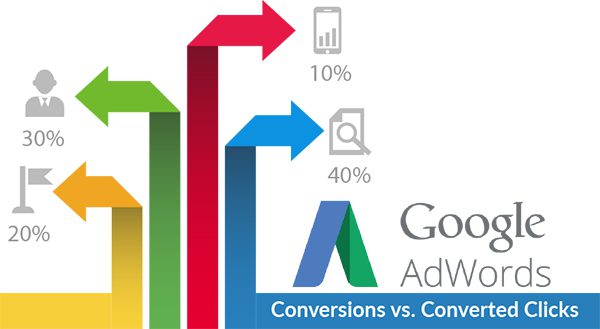
The main difference is that while Converted clicks only track last click and measure ad conversion with a broad brush, the newer Conversions metric is flexible in how you can count them (1-per-click or many-per-click as well as choosing attribution model), and also includes more valuable data such as cross-device conversions which aren’t able to be included in Converted clicks.
In September, Google has announced that Converted clicks are being removed and that all advertisers will have to switch to Conversions by the 21st.
If you use Converted clicks to measure success in AdWords currently, and you’re freaking out about having to start using Conversions instead, don’t be! Google is offering a free migration tool to help transition if you’re currently using Converted clicks as your conversion bid metric for enhanced CPC or target CPA bidding. To add to that, Conversions are a more thorough metric with far more options which can benefit your business in a big way.
The main difference between the two settings is that while Converted clicks show you the number of ad clicks resulting in a conversion, Conversions further refine that with the ability to count multiple conversions from one ad click as well.
What this means is that if a customer buys multiple items after clicking on an ad, or returns a week later and buys more, Conversions allow you to track either the individual purchases as separate conversions, or all of them together to get an idea of the value of each customer. Converted clicks only allow you to view all of the purchases as one single conversion.
This means that a high-value conversion, one where a customer makes multiple purchases, is treated identically to a low-value conversion, one where a customer may only make a single purchase. In many instances, understanding this differentiation can be a big boost in determining the success of ads.
There are also fewer effective segmentation options available with Converted clicks. Conversions allows you to segment by category, source, or conversion name so that you can see which ad clicks result in more than one conversion. Without this feature, Converted clicks lacks the ability to truly drill down into your ads to a granular levels and see detailed insights on which ads are more effective at garnering multiple conversions per customer.
The real benefit of Conversions is the flexibility. While it allows you to see multiple conversions from a single customer, it still gives you the option to track only one conversion per ad click, similar to how Converted clicks worked. This is incredibly useful for businesses that have a conversion goal such as signing up for a newsletter or filling out forms to receive more information on a service.
If your company offers these alongside purchasable items, it is important to track them differently. You probably don’t weight someone who signs up on multiple forms the same as someone who makes multiple purchases. Tracking them separately with the option to count each unique purchase as a conversion point, but only one conversion per ad click for multiple signups, is essential.
Another important effect of this transition is due to cross-device conversions being counted by default in the newer metric. If you were using Converted clicks before, by definition you weren’t including cross-device conversions.
In September, that will change and they will be included without the option to exclude them. This is a very big change for anyone still using Converted clicks. Trust me, this is a good thing! It sort of forces you to use them. Historically, cross-device conversions were a separate column, so most advertisers would maybe look at that column periodically, but when they looked at “conversions” they would exclude cross-device from the totals in most cases.
Starting in September, when you look at “conversions” you’re now including cross-device conversions by default, so the big thing is that it’s a mental shift for retailers where cross-device conversions are going from being a secondary consideration to being counted as primary conversions in AdWords.
The other impact of this is that if you use enhanced CPC or target CPA in AdWords, with these changes the system will start considering cross-device conversions in its algorithm to adjust bids in real-time. This is great because it means that AdWords will have better data to tweak bids in real-time to generate more conversions for you.
Often in marketing the fear of change can hurt a business, but this is a case where no fear is necessary. Switching from Converted clicks to Conversions is actually a quality of life improvement for most businesses. It allows you to refine your conversion tracking and better decipher where you are successful and where you can improve.
Below, you’ll find a one-sheeter we’ve created to give even more information and a solid overview of what the change means.
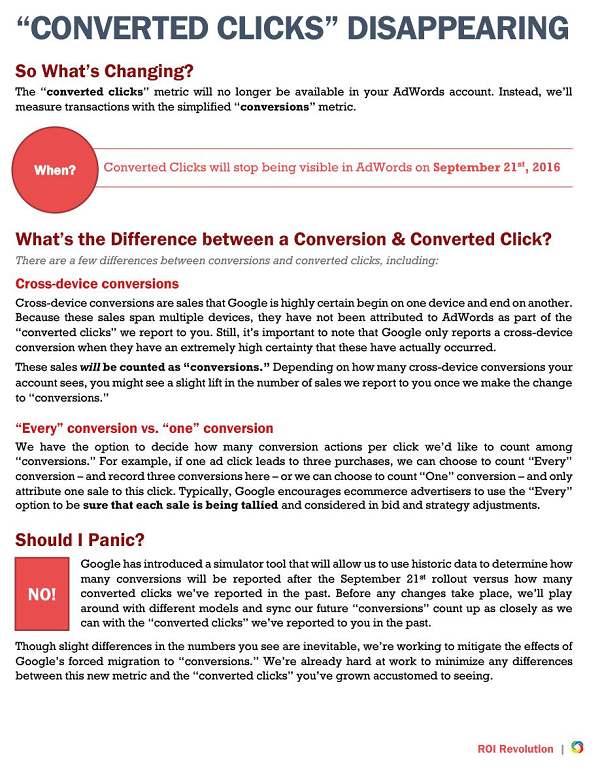
If you’re looking for even more insights on Google AdWords, download our special report on the Five 5-Minute Fixes to Increase AdWords ROI. We also have a great Guide to Decluttering AdWords that can help you to further improve your account and streamline your advertising strategy.


